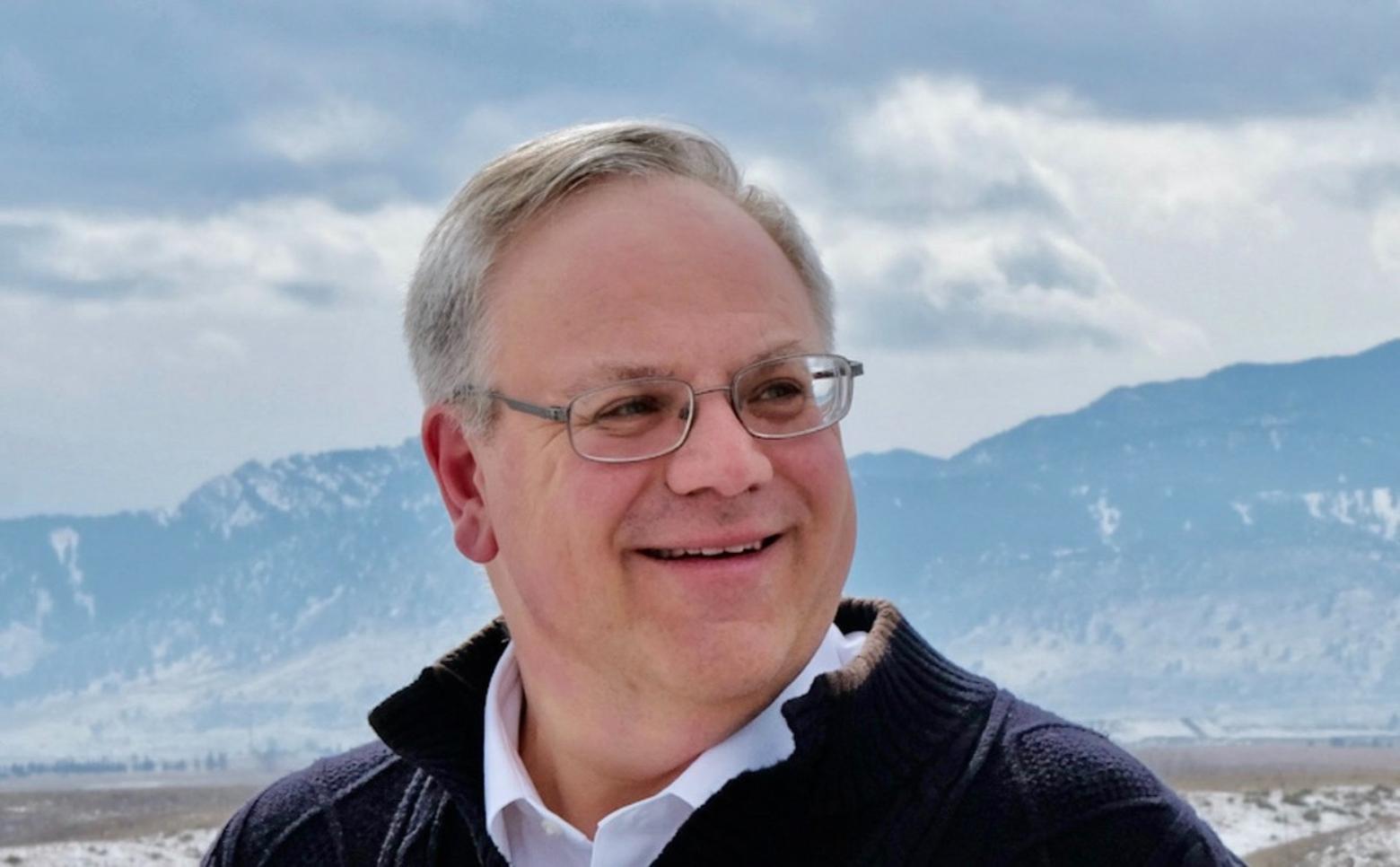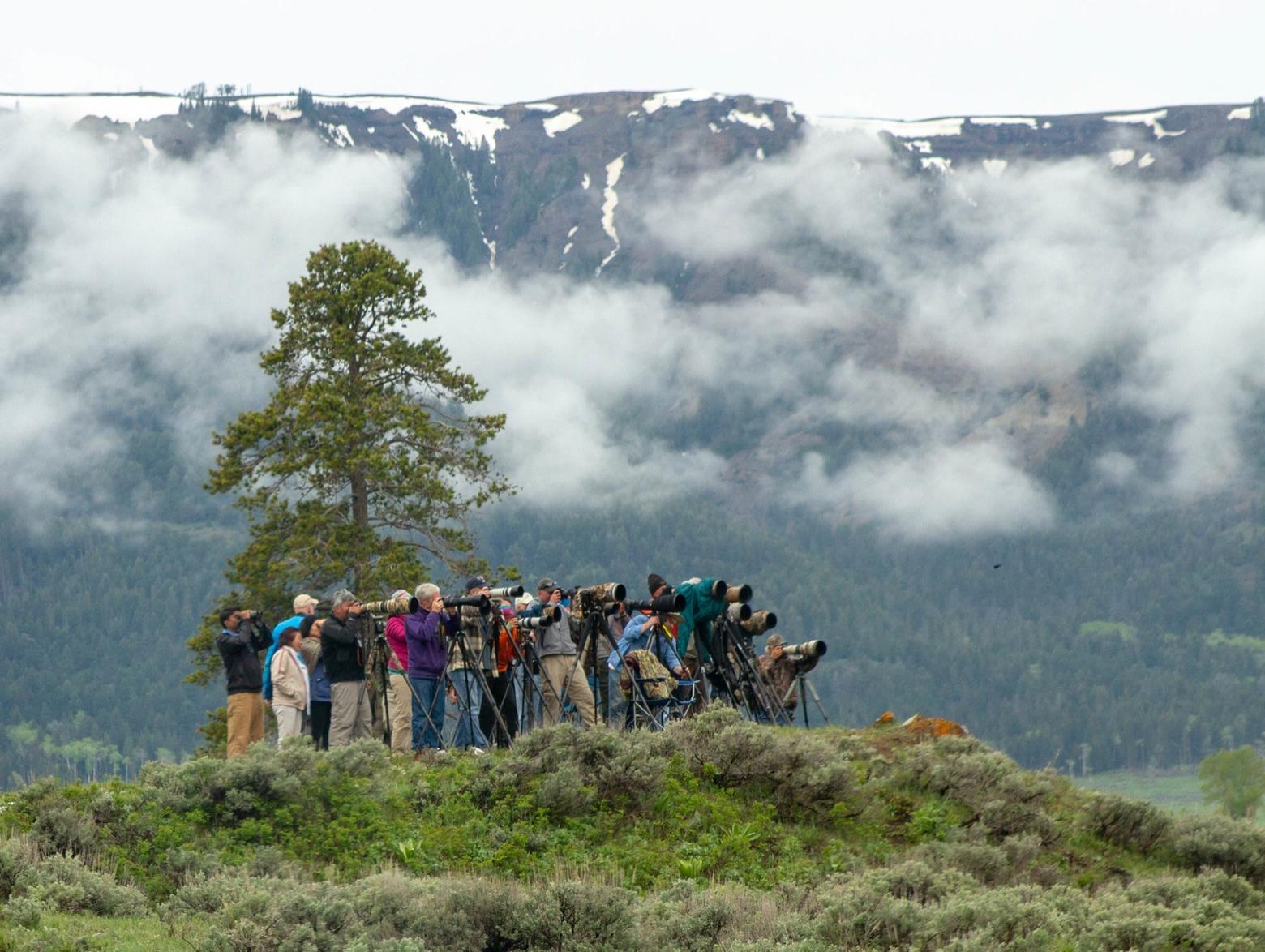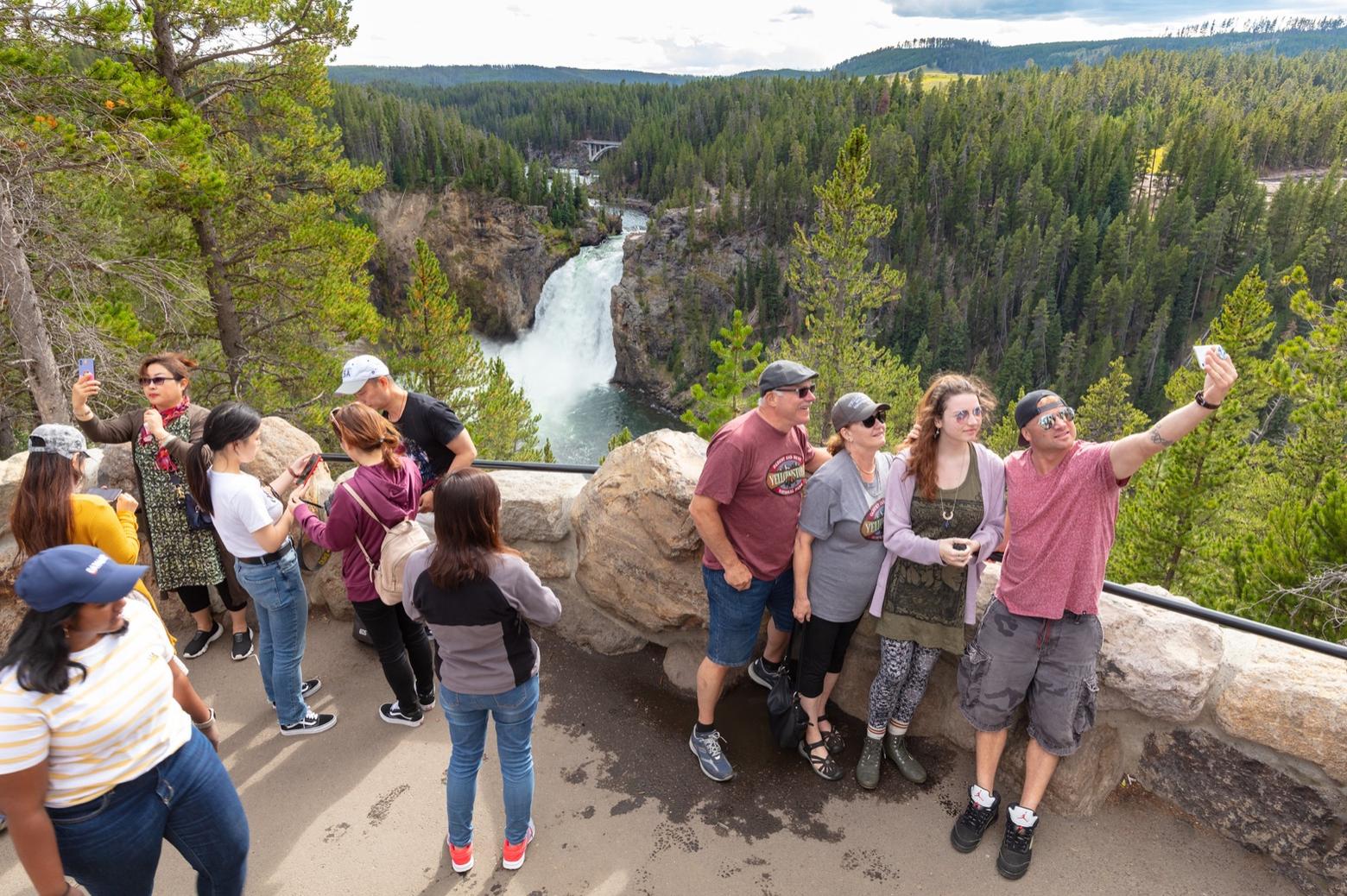Back to StoriesDoes Interior Secretary David Bernhardt Not Understand Coronavirus Threat?
March 23, 2020
Does Interior Secretary David Bernhardt Not Understand Coronavirus Threat?Critics condemn Trump's top public land cabinet minister for telling people to visit Yellowstone and other parks during a pandemic
[UPDATE: Citing coronavirus and concern for protecting public health, leaders of Yellowstone and Grand Teton national parks announced on Tuesday morning, March 24, that both national parks would close until further notice. Read full text of press announcement at bottom of this story]
In these times of mass fear and stir-craziness, does the allure of Yellowstone and public lands surrounding America’s first national park represent destinations that could hasten the spread of novel coronavirus?
Both the US Interior and Agriculture departments are coming under fire this week from public health officials, as well as the ranks of federal employees and others in gateway communities, for messaging that encourages people to continue visiting parks and national forests during this dangerous time of rapid Covid-19 spread.
As the nation coast to coast braces for spiking infection rates and citizens are told to shelter in their homes in order to minimize contact with other people, a recent directive from top officials in the Trump Administration is being criticized as confusing, irresponsible and potentially imperiling lives.
“I am extremely concerned that the ongoing operations of Yellowstone will have a deleterious impact on our shared effort to fight the COVID-19 pandemic,” Matt Kelley, public health officer for Gallatin County, Montana wrote in a letter Sunday to Interior Secretary David Bernhardt and Yellowstone Supt. Cam Sholly imploring them to implement an immediate full closure of Yellowstone.
With the following words underlined for emphasis, Kelley added, “If you fail to take action to curtail this mass migration of tourists, it will imperil the ability of local health care, public health, and government resources and may cost lives. Our hospitals have limited capacity and we are doing all we can to preserve their ability and to bend the curve.”
Montana Gov. Steve Bullock joined the chorus Monday saying that Yellowstone remaining open "undermines our efforts to reduce exposures and exacerbates risks for all Montanans."
On March 18, Yellowstone issued a news release at the order of Bernhardt to temporarily suspend collecting park entrance fees so that rangers at the gates could minimize close contact with incoming tourists. Bernhardt portrayed it as a gift to the public. “This small step makes it a little easier for the American public to enjoy the outdoors in our incredible national parks.”
The directive applied to all national parks in the country, though some, like Yosemite in California and Rocky Mountain in Colorado have been shuttered, at the discretion of individual park superintendents to be consistent with orders coming from governors in a few states. In Rocky Mountain's case, townsfolk in the gateway community of Estes Park requested the closure.
Gallatin County, home to bustling Bozeman, has the largest resident population in the Greater Yellowstone Ecosystem and its borders extend to West Yellowstone, Montana on Yellowstone's border. Gallatin also has, to date, more confirmed cases of coronavirus than any other county in Montana. Similarly, another Greater Yellowstone county, Fremont in Wyoming, has the highest number in that state.
The boundary of Park County, Montana, which extends from Livingston to the Yellowstone gateway town of Gardiner near park headquarters at Mammoth Hot Springs, also asked the federal government to temporarily close down the national park.
"Park County has very limited resources with which to provide health care to its citizens. We are a county of 2,813 miles with a single critical access hospital located in Livingston, Montana," wrote Dr. Laurel Desnick, the county health officer. "We have a very elderly population, approximately 30 percent older than 65. This is the group most at risk for severe infection and high use of our limited medical resources. In light of the rapid spread of the Covid-19 pandemic, it is accurate to assume that if we do not take steps to curtail visitation by non-county residents, Park County will not have the resources to provide essential care to its citizens during the pandemic."
Meanwhile, similar concerns are echoing in Jackson Hole where huge expanses of Grand Teton National Park and the Bridger-Teton National Forest are still open for outdoor recreation.
“At the same time the President, Vice President and the CDC are holding press conferences emphasizing the importance of self-isolating, it’s mind bogging that the Secretary of the Interior is telling Americans they can still visit national parks and not only that, but it’s free. It’s contrary to science and good common sense and it is endangering not only people who visit the parks but the employees who work there.” —Joan Anzelmo, member of the Coalition to Protect America's National Parks
“The Department of the Interior and NPS continue to urge visitors to do their part when visiting a park to follow CDC guidance by maintaining a safe distance between yourself and other groups; washing your hands often with soap and water for at least 20 seconds; avoiding touching your eyes, nose, and mouth; covering your mouth and nose when you cough or sneeze; and most importantly, staying home if you feel sick,” Bernhardt’s order issued by Yellowstone stated.
The problem with the kind of “social distancing” advocated by Bernhardt on public lands is that it doesn’t work when many antsy citizens are converging upon the same places at the same time. Coronavirus can be transmitted simply by one person breathing the contaminated air of one who is infected or coming in contact with Covid-19 on a door handle, railing, or faucet.
On the same day Bernhardt issued the statement, Yellowstone closed the Albright Visitor Center and the Boiling River swimming area but people can still drive in, ski and hike—and now also contend with bathrooms, for example, that could be contaminated with Covid-19, increasing exposures, critics say.
"One of the problems is that, with the park concessionaire, Xanterra, closing its hotels and restaurants down to minimize risk, people are still going to Yellowstone and congregating in Gardiner, or they are driving into the Lamar Valley and standing together to watch wolves," a former high-ranking Park Service official from Greater Yellowstone said. "This has created a lot of unwanted and potentially bad unintended consequences."
Further, as public health officials note, a person could be infected with the virus and yet be asymptomatic or that same person could be passing it to others. On Monday, the Bridger-Teton National Forest, based in Jackson, Wyoming, announced that it would no longer be assigning staff to clean public toilets because it could expose employees to the virus.
A senior official with an Interior Department agency working in Greater Yellowstone told Mountain Journal, "We are not acting quickly enough. It [a massive proliferation of the disease] can happen here. We are still under a fog (of misguided thinking) that 15 days will stop the spread. We need a long term strategy," the person said. "Shutting down does mean killing the economy. But when county officials [Gallatin County public health director Matt Kelley] talk like this, it is time to start listening."
An email sent from Mountain Journal to the Interior Department requesting an interview with Bernhardt was not answered.
Joan Anzelmo, a retired Park Service careerist, lives in Jackson Hole and spent decades working as a national leader in the agency’s public affairs office, as a superintendent and as a federal crisis management specialist.
“At the same time the President, Vice President and the CDC are holding press conferences emphasizing the importance of self-isolating, it’s mind bogging that the Secretary of the Interior is telling Americans they can still visit national parks and not only that, but it’s free,” Anzelmo says. “It’s contrary to science and good common sense and it is endangering not only people who visit the parks but the employees who work there.”
Anzelmo is a longtime member of the Coalition to Protect America’s National Parks comprised of 1500 retired Park Service employees who collectively have more than 30,000 years’ of national park management experience. “The number one tenet in crisis communication is to communicate quickly and accurately,” Anzelmo says. “As bad as Secretary Bernhardt has been on a number of important issues involving national parks and public lands, this one is shocking. We are in the middle of a national emergency.”
Last week, Coalition chair Phil Francis called Bernhardt’s thinking “irresponsible” at the same time Park Service employees are being told to work from home.
Over the weekend and fueled by both mild weather and a populace eager to spend time outdoors, hundreds of people drove into Yellowstone’s northern entrance, upsetting some in the park gateway town of Gardiner that the outsiders could be bringing Covid-19 into their community.
Even though the shutdown of commerce already is hitting tourism operators hard, Gardiner residents were more immediately concerned about the health of their families, especially elderly residents.
Spring is one of the premiere times for watching wildlife in Greater Yellowstone. There’s also a cherished tradition in both Grand Teton and Yellowstone to allow bicyclists to ride the interior park road systems just after snow plowing is completed and prior to opening of auto traffic. Hundreds often take advantage of the opportunity in addition to those who want to take advantage of the last weeks of skiing and snowshoeing before trails open up.
Two acting national park employees, one from Yellowstone and another Grand Teton, told Mountain Journal they are worried about not only their own health and that of their families but keeping parks open heightens risk for visitors and damage to resources, as occurred during a recent park shutdown.
Similar concerns have been registered in Utah and other national parks and public lands in the desert Southwest where large groups of people congregate to hike, mountain bike and ride motorized vehicles during spring break.
The message from physicians in Utah is that people need to stay away because travelers can carry Covid-19 to their communities and complicate any attempt at containment. A priority, in order to eventually get coronavirus under control, will be rigorous testing and tracking of source infections. National coronavirus czar Anthony Fauci said Monday Americans will likely need to stay at home for at least several more weeks at least.
“It’s a hard call because everyone wants to be outside. Some of us in the West may have places we want to go that are empty. But for the greater good we all have to make sacrifices and heed the request from medical professionals to stay at home,” Anzelmo said.
As a former national spokeswoman for the federal Interancy Fire Center in Boise, Anzelmo expressed another fear. Federal employees from the Park Service and Forest Service play key roles in the government’s ability to battle wildfires. If employees fall ill, it could cripple that capability.
Anzelmo said the federal government needs to be setting the example for prudent behavior during the pandemic.
“It’s interesting that the private sector took up the call to action much earlier than the federal government did,” she said, pointing to the voluntary closure of Disney theme parks and casinos in Las Vegas. “Knowing they’d suffer a severe economic impact, they didn’t hesitate. They acted for the good of public health which is the foundation of a healthy economy.”
EDITOR'S NOTE: If you are a civil servant with concerns about how your agency is responding to coronavirus or dealing with other resource issues, including suppressing of information, contact us. We want to hear from you. We will honor your anonymity.
Joint press release from Yellowstone and Grand Teton national parks March 24:
MAMMOTH HOT SPRINGS AND MOOSE, WY- Yellowstone and Grand Teton national parks are announcing modifications to operations at the request of local county health officers from Park County, WY, Park County, MT, Teton County, WY, and Gallatin County, MT. The health and safety of our visitors, employees, volunteers, and partners is our number one priority. The National Park Service (NPS) is working servicewide with federal, state, and local authorities to closely monitor the COVID-19 pandemic.
Effective immediately, Yellowstone and Grand Teton national parks are closed to all park visitors until further notice. There will be no visitor access permitted to either park. State highways and/or roads that transcend park/state boundaries and facilities that support life safety and commerce will remain open. Both parks will cooperate on the implementation of the closures. We will notify the public when we resume full operations and provide updates on our website and social media channels.
"The National Park Service listened to the concerns from our local partners and, based on current health guidance, temporarily closed the parks," said Yellowstone Superintendent Cam Sholly and Grand Teton Acting Superintendent Gopaul Noojibail. "We are committed to continued close coordination with our state and local partners as we progress through this closure period and are prepared when the timing is right to reopen as quickly and safely as possible."
The parks encourage people to take advantage of various digital tools available to learn about Yellowstone and Grand Teton National Parks.





